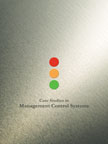Operations Management
 |
Details
Textbook:
Pages : 329;
Paperback;
210 X 275 mm approx.
Workbook:
Pages :
239; Paperback;
210 X 275 mm approx, Sample Applied Theory Questions
Courier charges extra
Pricing
Textbook Price: Rs. 900;
Workbook Price: Rs. 700;
Available only in INDIA
Detail Table of Contents
Click below to view
HTML
Trends in Operations Technology : Chapter 21
SUMMARY: Organizations must improve their products as well as productivity to retain their market share. The long-term success of an organization requires investments in technology because new technologies can improve efficiency and productivity. In this chapter, we discussed how organizations can benefit from automation. Some of the recent technological developments in the field of operations management, which include computer-aided design (CAD), direct and indirect computer-aided manufacturing (CAM), flexible manufacturing system (FMS), and computer integrated manufacturing (CIM) were discussed in the chapter. Computer Aided Design (CAD) is used for designing products and processes on a computer terminal. Computer systems assist in the creation, modification, analysis and optimization of a design. In Computer Aided Manufacturing (CAM), computers are used either directly to control the processing equipment, or indirectly to |
|
support manufacturing operations. Automated machines usually perform a variety of operations, depending on the instructions received from the computer with respect to the sequence and operational specifications of a process. FMS is a form of flexible automation in which several machine tools are linked to the materials-handling system. A central computer controls all aspects of the system. CIM refers to a computer application that connects various computerized systems into a single multi-functional system.
Another development in the field of technology is artificial intelligence (AI). AI enables computers to exhibit some of the characteristics of human intelligence, like the capacity for learning, understanding language, reasoning and problem solving.
EDI is a system, wherein standardized forms of electronic documents are transferred between two computer systems. Customers and suppliers or departments within the same organization can share and transmit information electronically in real time using EDI.



